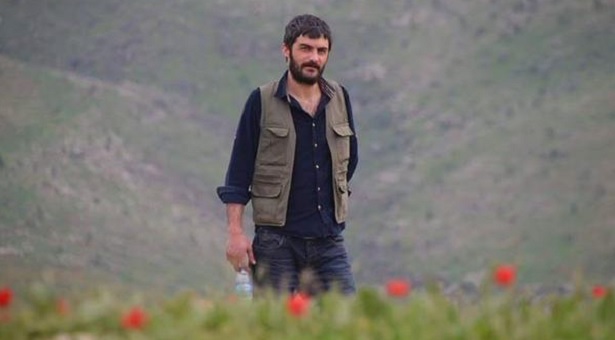Anger in Turkey is palpable after a young Kurdish man is executed by Turkish police before being dragged through the streets to a chorus of taunting from officers

Anger in Turkey is palpable after a young Kurdish man is executed by Turkish police before being dragged through the streets to a chorus of taunting from officers
 Officers under the direction of Turkish President Recep Tayyip Erdoğan have executed a young Kurdish man in Southeast Anatolia before dragging his lifeless body through the street from an armored personal carrier, touching off a storm of anger in the country.
Officers under the direction of Turkish President Recep Tayyip Erdoğan have executed a young Kurdish man in Southeast Anatolia before dragging his lifeless body through the street from an armored personal carrier, touching off a storm of anger in the country.
Hacı Lokman Birlik, a 24-year-old who had previously acted and directed in a short film, was riddled with at least 28 bullets by Erdoğan’s police forces on Oct. 3 before he was tied from the neck and dragged by an APC through the streets of the southeastern province of Şırnak (Şirnex).
A video that was uploaded to a racist Turkish Facebook page in the wake of the atrocity showed Birlik’s lifeless body being dragged on the road as officers celebrated the murder with obscenities and light-hearted banter. Many news portals took down the graphic video following requests from Birlik’s family.
“Take a good look at this photograph. It was taken [on Oct. 3] in Şırnak. Let no one forget it, because we aren’t going to forget it,” Peoples’ Democratic Party (HDP) co-chair Selahattin Demirtaş said following the release of pictures of the murder.
Birlik is also the brother-in-law of HDP deputy Leyla Birlik.
Prime Minister Ahmet Davutoğlu expressed his “disapproval” of the photo, while nonetheless claiming that Birlik had been set to fire a rocket-propelled grenade at police officers when he was killed.
An autopsy revealed that of the 28 bullets that hit Birlik, 26 were fired from close range.
The Interior Ministry has promised an investigation into the incident, saying: “The state of the Republic of Turkey is a state under the rule of law. Our fight against terrorism will continue with determination within the framework of the principles of the rule of law.”
Since July, however, regime forces tied to the palace of Erdoğan have been accused of gross human rights abuses in a battle against the Kurdistan Workers’ Party (PKK) in southeast Turkey that include serious allegations that they have indiscriminately targeted civilians in a number of provinces. But buttressed by a “pool media” that parrots the government’s version of events, the state has claimed that those killed are either PKK militants or, where it is impossible to deny the deaths of civilians, that they were killed by guerrilla forces.
Noting that events similar to murder of Birlik occur every day, Demirtaş said: “It is embarrassing that [the PM] chose words that effectively blamed the person being dragged on the ground. That’s just what’s been caught on camera. Every day similar incidents more or less occur. If that’s what they do to the dead, try to imagine what they do to the living.”
The Turkish state has a long tradition of exhibiting the dead bodies of Kurds as a tool of intimidation, having previously been photographed dragging the bodies of murdered PKK fighters in 1992. Earlier this summer, it also stripped naked a dead female guerrilla, Kevser Eltürk (Ekin Wan), before enthusiastically exhibiting her body in public.
Parliamentary question
Birlik’s sister-in-law, Leyla Birlik, has filed a parliamentary question demanding answers regarding the man’s death.
“What is your humane, conscientious and moral explanation for the torture demonstrated toward the dead under your government, given that it even exceeds one of the most famous mottos of the state of the Republic of Turkey, ‘The best Kurd is a dead Kurd?’” the deputy said in her parliamentary question.
Leyla Birlik also demanded to know whether the dragging of the dead was a new practice for which soldiers and police had been trained and whether her relative had been targeted given that members of the security forces immediately wrote on her Twitter account, “You will meet the same end” and “Leyla Birlik, come get your brother-in-law.”
Social media reaction
The widespread revulsion to Birlik’s murder was spurred by users on social media – most notably HDP co-chair Demirtaş – but the debate soon revealed an undercurrent of Turkish nationalistic chauvinism that has been more pronounced since the restart of the conflict with the PKK.
“What’s this? Aren’t the police able to walk their dog in peace?” Cemal Aydoğan, a doctoral student at Germany’s Ilmenau Technical University, wrote on his Twitter page, prompting the university to start an investigation that could result in “criminal proceedings.”
Most displays of delight at Birlik’s passing, however, attracted little consequence – if not outright encouragement.
“[Birlik] fed squirrels, now he’s digging the asphalt to plant hazelnut seeds,” said Ekşisözlük – a widely used Turkish urban dictionary – user ed_gein_jr in reference to a photo showing Birlik caring for animals.
Other examples of malevolent irony also infected the cybersphere. “I’m also against dragging him from the back of a car. He could have been tied to a horse. It’s a shame for the state’s gasoline [bill]. In the end, they buy [the gasoline] with our taxes,” said Ekşisözlük user jordan melo.
Analyzing the reaction of Turkish nationalists to the killing, Evrensel journalist Faruk Ayyıldız succinctly listed four steps in the chauvinistic mindset: First, there is the suggestion that the photos are faked. Second, there is the belief that the government’s friend-turned-foe, the Fethullah Gülen movement, has distributed the photo to raise the tension in Turkey. Third, is the sense that the only good Kurd is a dead Kurd.
Ultimately, however, the reaction boils down to: “All of you should die.”
Sendika.Org, DİHA, Evrensel